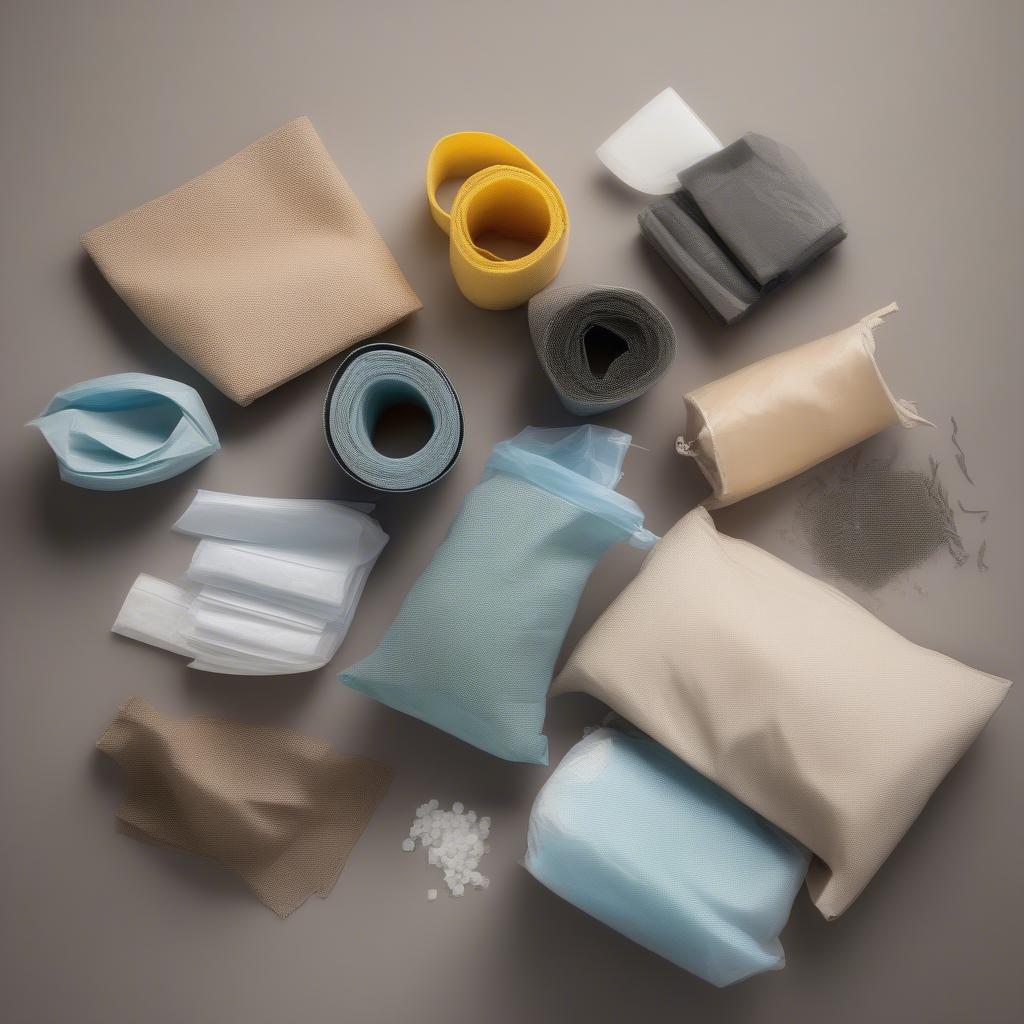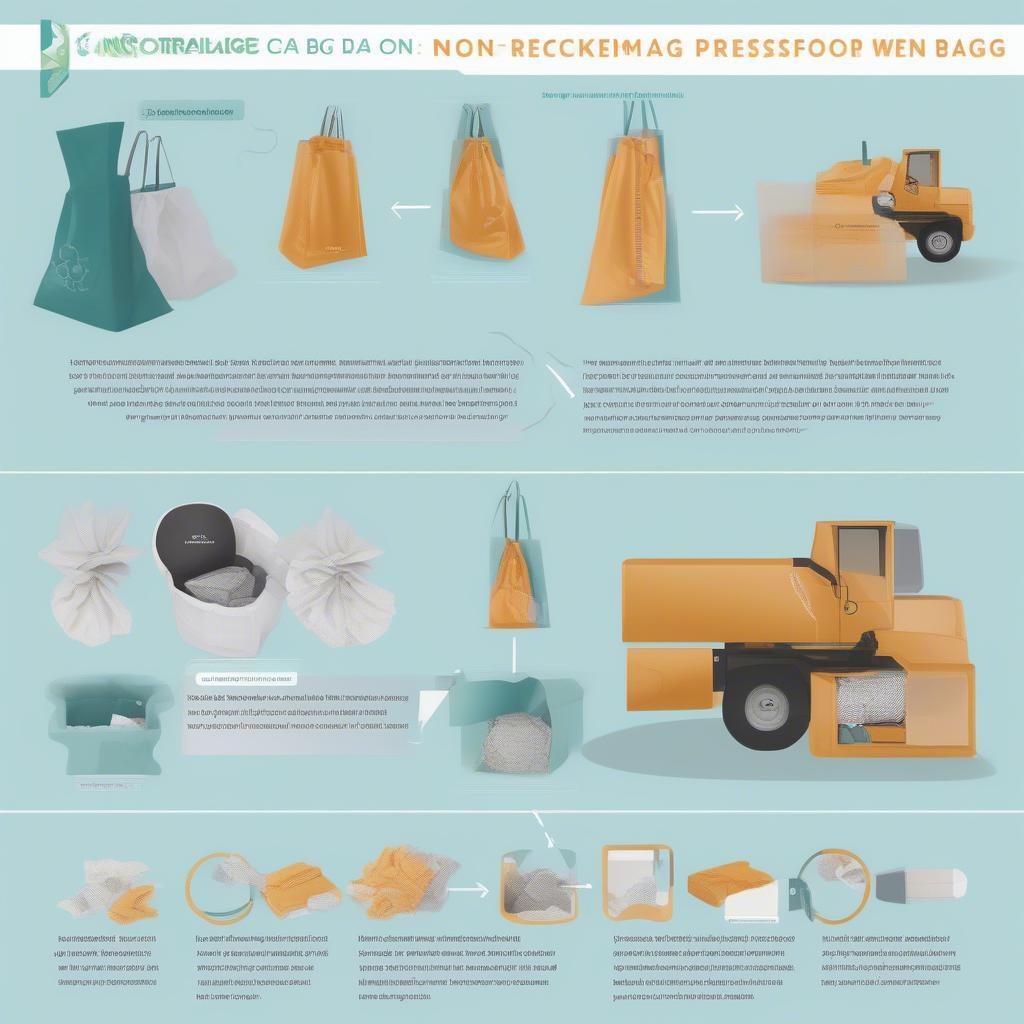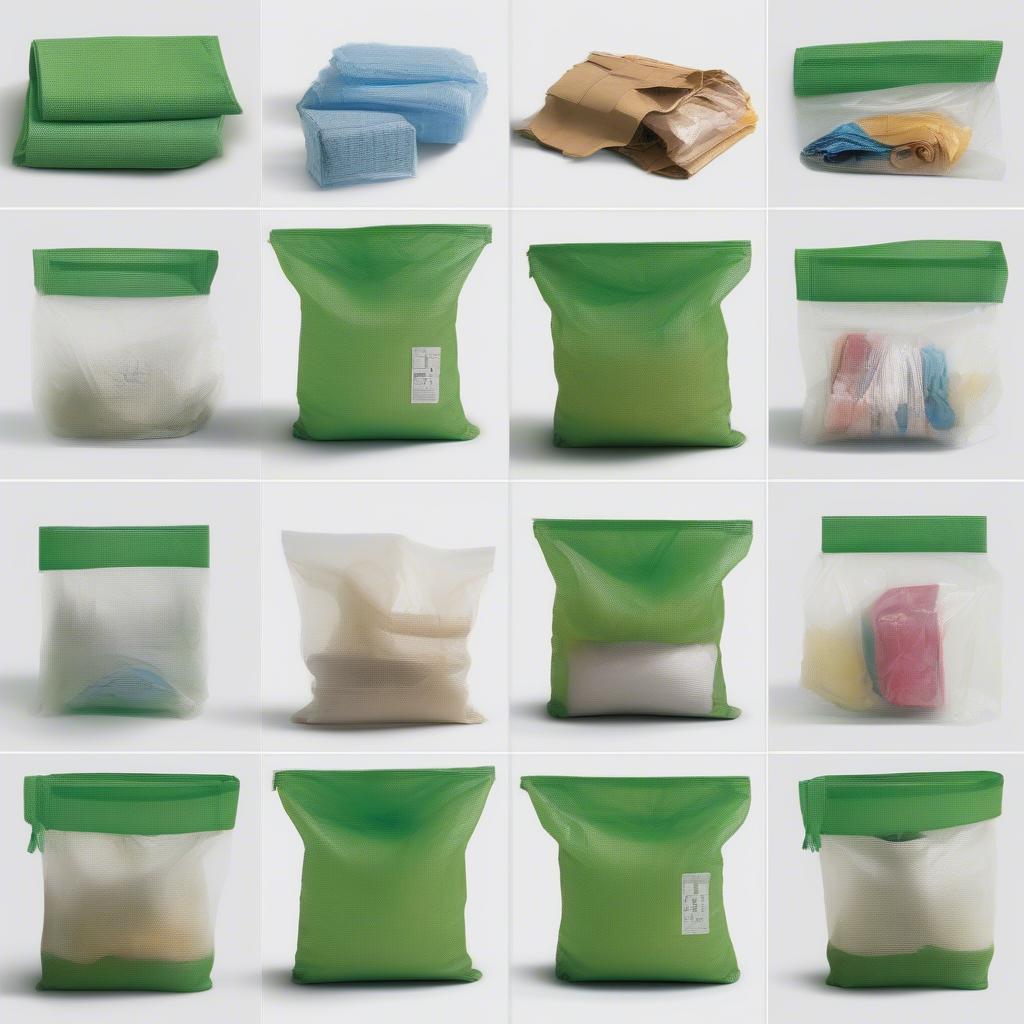Woven Bag
Non Woven Bag Recycling: A Comprehensive Guide
Non Woven Bag Recycling is becoming increasingly important as we strive for a more sustainable future. This guide explores the process, benefits, and challenges of recycling these ubiquitous bags, offering practical tips for consumers and businesses alike. recycled plastic woven tote bags are a great alternative to traditional non-woven bags.
Understanding Non Woven Bag Materials
Non-woven bags are made from synthetic fibers, often polypropylene (PP), bonded together through heat, chemicals, or mechanical processes. This creates a durable, lightweight material ideal for shopping bags, promotional totes, and packaging. The composition of these bags impacts their recyclability.
 Different Types of Non-Woven Bag Materials
Different Types of Non-Woven Bag Materials
The Non Woven Bag Recycling Process
While not all non-woven bags are easily recyclable curbside, many can be repurposed or recycled through specific channels. The process typically involves collecting, sorting, cleaning, and then processing the material into new products. This can include things like plastic lumber, insulation, or even new non-woven bags.
Challenges in Non Woven Bag Recycling
One of the main challenges lies in the mixed material composition of some non-woven bags. Laminated or coated bags are harder to process, often ending up in landfills. Another issue is the lack of widespread collection infrastructure for these bags, compared to traditional plastics. However, initiatives are emerging to address this gap.
 The Recycling Process of Non-Woven Bags
The Recycling Process of Non-Woven Bags
Benefits of Non Woven Bag Recycling
Recycling non-woven bags reduces the demand for virgin plastic, conserving resources and lowering greenhouse gas emissions. It also minimizes landfill waste and contributes to a circular economy. Furthermore, it creates new economic opportunities in the recycling and manufacturing sectors.
Why Recycle Your Non Woven Bags?
Beyond the environmental benefits, recycling these bags fosters a sense of responsibility and encourages sustainable consumption. It helps shift towards a more conscious approach to disposable items.
Practical Tips for Non Woven Bag Recycling
Consumers can actively participate in the recycling process. Check with local recycling facilities or retailers for drop-off programs. Reuse your non-woven bags as much as possible before discarding them. Choose bags made from recycled content when purchasing new ones. cheap shopping bundled non woven bags supplier often offer recycled options.
 Practical Tips for Recycling Non-Woven Bags
Practical Tips for Recycling Non-Woven Bags
The Future of Non Woven Bag Recycling
Innovations in material science and recycling technology are paving the way for a more sustainable future for non-woven bags. Biodegradable and compostable alternatives are gaining traction, offering a promising solution to the plastic problem. pp woven bag material is another option to consider. china white non woven bag manufacturers are also exploring sustainable solutions. u cut non woven bag recycling options are also becoming more prevalent.
Conclusion
Non woven bag recycling is a crucial step towards a more sustainable future. By understanding the process, challenges, and benefits, we can all contribute to reducing our environmental impact and creating a healthier planet. Embrace the opportunity to recycle and reuse these bags, making a positive difference for generations to come. Start recycling your non-woven bags today!
FAQ
- Are all non-woven bags recyclable?
- How can I tell if a non-woven bag is recyclable?
- What are non-woven bags made of?
- Where can I recycle my non-woven bags?
- What are the benefits of recycling non-woven bags?
- Are there alternatives to non-woven bags?
- How can I reduce my use of non-woven bags?
Need support? Contact us at Hotline: +84 388 951 999 or visit us at Hanoi, Vietnam or Tech Avenue, Suite 12, San Francisco, CA 94105, USA. We offer 24/7 customer service.
